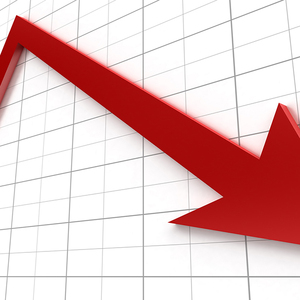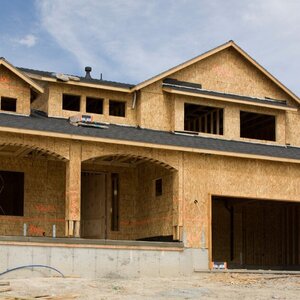The WPJ
THE WORLD PROPERTY JOURNALReal Estate Facts Not Fiction
Residential Real Estate News

U.S. Mortgage Delinquencies Uptick in Q3
Residential News » Houston Edition | By Monsef Rachid | November 27, 2017 8:04 AM ET
Hurricanes Harvey, Irma and Maria caused disruptions in many States.
According to the Mortgage Bankers Association's National Delinquency Survey, the U.S. delinquency rate for mortgage loans on one-to-four-unit residential properties increased to a seasonally adjusted rate of 4.88 percent of all loans outstanding at the end of the third quarter of 2017. The delinquency rate was up 64 basis points from the previous quarter, and was 36 basis points higher than one year ago.
The percentage of loans on which foreclosure actions were started during the third quarter was 0.25 percent, a decrease of one basis point from the previous quarter, and five basis points lower than one year ago.
The delinquency rate includes loans that are at least one payment past due but does not include loans in the process of foreclosure. The percentage of loans in the foreclosure process at the end of the third quarter was 1.23 percent, down 6 basis points from the previous quarter and 32 basis points lower than one year ago.
The serious delinquency rate, the percentage of loans that are 90 days or more past due or in the process of foreclosure, was 2.52 percent in the third quarter, up 3 basis points from the previous quarter, but 44 basis points lower than one year ago.
Marina Walsh, MBA's Vice President of Industry Analysis, offered the following commentary on the survey:
"In the third quarter of 2017, the overall delinquency rate rose by 64 basis points over the previous quarter, with the 30-day delinquency rate accounting for 50 basis points of this variance. Hurricanes Harvey, Irma and Maria caused disruptions and destruction in numerous states. Florida, Texas, neighboring states, as well as devastated Puerto Rico, saw substantial increases in their past due rates. While forbearance is in place for many borrowers affected by these storms, our survey asks servicers to report these loans as delinquent if the payment was not made based on the original terms of the mortgage regardless of any forbearance plans in place.
"Mortgage delinquencies increased across all loan types - FHA, VA and conventional - on a seasonally-adjusted basis. The FHA delinquency rate increased to 9.40 percent from 7.94 percent in the second quarter, a 146 basis-point increase and the highest quarter-over-quarter increase reported in the history of our survey. The VA delinquency rate increased 52 basis points to 4.24 percent from 3.72 percent in the second quarter. The conventional delinquency rate increased 50 basis points to 3.97 percent from 3.47 percent in the second quarter.
"While the storms played a critical factor in explaining the rise in the overall delinquency rate, there are other factors to consider, especially given delinquency rate increases in other states not directly impacted by the storms. First, there were timing issues associated with the last day of the month being a Saturday. Processing for mortgage payments made over the weekend did not occur until Monday, October 2 and thus these mortgage payments were identified as 30-days delinquent per NDS definitions.
"Second, delinquency rates were already at historic lows in the second quarter of 2017. The FHA and VA delinquency rates were at their lowest levels since 1996 and 1979 respectively, while the conventional delinquency rate reached its lowest level since 2005. It would not be unexpected for delinquencies to eventually increase from these levels.
"Other factors to consider include seasonality, rising loan-to-value and debt-to-income ratios for certain product types, normal loan aging, and declining average credit scores on new FHA endorsements since 2014 as the agency has withdrawn from its counter-cyclical role during the crisis.
"Most of the major variances from the second to third quarter of 2017 are tied to early delinquencies for all loan types. In the third quarter of 2017, there was little movement in the seriously delinquent rate, which rose just 3 basis points and was down 44 basis points from a year ago. Foreclosure starts were down one basis point from the previous quarter. In future surveys, we may see a temporary drop in foreclosure starts in hurricane-impacted states due to storm-related foreclosure moratoria, as was seen during Hurricane Katrina in 2005.
"It will likely take about three or four more quarters for the effects of the most recent hurricanes on the survey results to dissipate. That said, we see loan performance as still healthy and strong, supported by a positive employment and wage outlook. Thus far in 2017, job growth is averaging 169,000 jobs per month, unemployment rate has decreased from 4.8 to 4.1 percent, and wage growth is 3.8 percent on a year over year basis."
Sign Up Free | The WPJ Weekly Newsletter
Relevant real estate news.
Actionable market intelligence.
Right to your inbox every week.
Real Estate Listings Showcase
Related News Stories
Residential Real Estate Headlines
- Orlando's Housing Market Continues to Slow Down This Fall
- U.S. Mortgage Originations Predicted to Hit $1.95 Trillion in 2024
- Construction Input Costs in America Uptick in September
- Global Home Price Growth Further Slows in Mid-2023
- Home Values in U.S. Begin to Slip Late Summer
- Foreclosure Filings in U.S. Spike 34 Percent Annually in Q3
- U.S. Mortgage Credit Availability Upticks in September
- Retail Market is a Bright Spot for Manhattan Real Estate
- Residential Rents in U.S. Dip in September Amid Growing Apartment Supply
- U.S. Mortgage Rates Continue to Surge in October
- Greater Las Vegas Home Sales Down 10 Percent Annually in September
- Most U.S. Homebuyers Say Buying a Home is More Stressful Than Dating in 2023
- Mortgage Applications Dive 6 Percent Last Week in America
- Despite Peak Interest Rates, Global Housing Markets Improved in Q2
- U.S. Architecture Billings Index Reports Softening Business Conditions in August
- U.S. Home Price Growth Pace Upticks Again in August
- 10,000 Residential Properties Have Negative Equity in Hong Kong
- U.S. Pending Home Sales Dropped 7.1 Percent in August
- U.S. Mortgage Rates Reach Highest Level in 23 Years
- American Bankers See Weakening Credit Conditions Through End of 2024
- Palm Beach Area Residential Sales Uptick in August
- Driven by High Mortgage Rates, Pending Home Sales Drop 13% Annually in September
- Miami Area Residential Sales Slip 13 Percent Annually in August
- U.S. Home Sales Dip 15 Percent Annually in August
- Home Flipping Transactions Down in 2023, Profits Up
- U.S. Listings Inventory Rises 4 Percent in August
- The Fed Leaves Rates Alone for Now in September
- Mortgage Applications Uptick in U.S. Amid High Rates
- Single Family Rent Growth in U.S. Drops to 3-Year Low in July
- Greater Orlando Area Home Sales Down 16 Percent Annually in August
- Home Purchase Cancellations Accelerating in the U.S.
- U.S. Construction Input Costs Uptick in August
- U.S. Mortgage Credit Availability Upticks in August
- Monthly Property Foreclosure Activity Upticks in U.S.
- Greater Palm Beach Area Residential Sales Dip 5 Percent Annually in Mid-2023
- NAR Predicts Several U.S. Housing Market Outcomes
- Demand for U.S. Housing is Dropping as Prices Rise
- U.S. Homeowner Equity Decrease by $287 Billion Over the Last 12 Months
- 1 in 5 Millennials Think They'll Never Own a Home in America
- 1 in 8 San Francisco Home Sellers Is Losing Money at Closing in 2023
Reader Poll
Marketplace Links
This website uses cookies to improve user experience. By using our website you consent in accordance with our Cookie Policy. Read More





